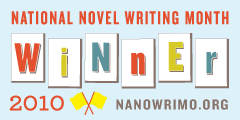@newsfromtengrrl for 2011-08-04
August 4, 2011
- How to Avoid Overwriting http://hoki.es/q9SMxQ #
- Shame in Academic Writing – Advice – The Chronicle of Higher Education http://hoki.es/pfR6QS #
- Encore Episode: Wikipedia’s Co-Founder on Academic Uses, and Limits, of Popular Open Encyclopedia – CHE http://hoki.es/qm51ve #
- Women in STEM: A Gender Gap to Innovation | Economics and Statistics Administration http://hoki.es/nfLjdv #
- New Missouri law on social-media ‘friending’ confounds teachers – KansasCity.com http://hoki.es/mWYj1G #
- Student Learning Groups: Homogeneous or Heterogeneous? | Edutopia http://hoki.es/qK5bYx #
- “Internet Explorer Users Have Lower IQs” Study Is a Hoax: Here Are Some of the Red Flags | Epicenter | Wired.com http://hoki.es/ny9TT5 #
- “Internet Explorer Users Have Lower IQs” Study Is a Hoax: Here Are Some of the Red Flags | Epicenter | Wired.com http://hoki.es/ny9TT5 #
- Chris Crutcher: How They Do It http://hoki.es/o1RXB6 #censorship #
- Literature Profs Offer Book Lists to Beat the Heat – UT Dallas News http://hoki.es/plSoTj #
- The Literacy of Gaming: What Kids Learn From Playing | MediaShift . PBS http://hoki.es/pj5Jha #
- Are academies the future of education? | The-Dispatch.com http://hoki.es/rkQaAd #
- Rethinking COPPA in the Age of Social Media | Edutopia http://hoki.es/pvJmzh #
- Your New Campus Guide: A Small Patterned Square (QRCode) That Talks to Your Smartphone | Chronicle of Higher Education http://hoki.es/rbZkK8 #
- Zotero in the Archives | GradHacker http://hoki.es/nKIhCg #
- Mark Pagel: How language transformed humanity | Video on TED.com http://hoki.es/nLdcIz #
- The English Teacher’s Email Survival Kit | Bedford Bits: Ideas for Teaching Composition » http://hoki.es/nTlhOA #
- Using DocScanner to Scan on the Go | ProfHacker – The Chronicle of Higher Education http://hoki.es/reDzuL #
- BBC News – Warning over children's multi-screen viewing http://hoki.es/qKkAcG #
- Student journalists use 20th-century tools to assemble campus paper | Video on Tweed – CHE http://hoki.es/qeniCv #
- Academic English Is Not a Club I Want to Join – The Chronicle Review – The Chronicle of Higher Education http://hoki.es/qSYosQ #
- What's Your Major? Probably Not One of These – News – The Chronicle of Higher Education http://hoki.es/plf3aS #
- The Encyclopedia of Babel: Scholars & Wikipedia – Inside Higher Ed http://hoki.es/o9po5Q #
- Updating the Common Rule – Inside Higher Ed http://hoki.es/mUJ991 #
- “Clicks” Get Bricks | Harvard Education Letter http://hoki.es/omRC8e #
- 'Why Should We Care?'–What to Do About Declining Student Empathy – The Chronicle of Higher Education http://hoki.es/rlr33Z #
- Innovations: E-Learning 'Nightmare Scenarios' – The Chronicle of Higher Education http://hoki.es/rdmdgf #
- Casual References to Violence Bring Serious Consequences for College Instructors – The Chronicle of Higher Education http://hoki.es/oLnFQi #
- From Classic to Modern, the Forthcoming digital version of the Loeb Classical Library – Inside Higher Ed http://hoki.es/q4adEA #
Powered by Twitter Tools







